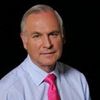
On a recent week in the Los Angeles area, we saw first-hand what the New York Times recently lamented as this city's ultra-visible blight of income inequality. Here and there, you can see the mix of the moneyed and the homeless in any major U.S. city--it's always been an element of urban life in the past half-century. Yet in L.A., it can be more unavoidable than in other cities. In one of the city's typical mid-level residential neighborhoods, our short walk to the corner bodega threw America's overall economic plight into stark relief. Next to a home with apartments that each rent for around $3,000 per month, a high-end BMW and a Porsche coupe were jammed into the tiny front yard. Only a hundred yards away, near a busy street corner, two homeless men, disheveled, unwashed and bearded, were carrying on a conversation about the film legend, Mary Pickford. (That sort of conversation is probably not heard among the indigent anywhere but in L.A.). Teens-- Latino, African-American and white--were cheerfully sitting together on a low wall, sampling songs on smart phones and debating the merits of one tune over another. It was hard to tell who could afford what, in this mix, as well as who would be sleeping under a roof. The homeless pair could very well have been demoralized actors on a day off from their production assistant jobs or Uber gigs--but I wouldn't bet on it.
I also wouldn't bet on the sustainability of this economic landscape. A quick scan of Zillow reveals how incredibly expensive it is to live in and around L.A. Three-bedroom homes (that would go for under $300,000 in the suburb of a small city) sell for three or four times as much in L.A., depending on the neighborhood. To rent a well-located apartment roomy enough for a two-child family can cost as much as $7,000 a month. Within a day or two of our walk to the bodega, the New York Times ran an Op-Ed about how L.A. has become the metropolis of the "developing world," a term meant to indicate that it's the multi-cultural capital for immigrants into the U.S. What we saw, in vivid physical terms, were two economic worlds on a collision course that can't end well. As the Times put it: "California has both the most "ultra rich" (people worth more than $30 million) and the worst poverty rate in America . . . The third world exists everywhere here (in L.A.)-- in the spread of inequality. The deepening gap between rich and poor is both a sociological fact and a state of mind. The cost of housing is up dramatically, and so is homelessness. "
In a time of plentiful jobs and higher incomes than today's average, a city like L.A. would thrive. Immigrants there are among the hardest working people in the world--when they can find work. Anyone who visits Southern California knows how much these American newcomers treasure the opportunity to live here and take pride in the most menial work. They are polite, meticulous, and doggedly industrious. The question is, can they get jobs? Work is scarce for everyone now, and education nearly as costly as real estate. If we don't start providing opportunities for everyone--and paying those who are already employed as much as we possibly can--you won't need a calculator to set the odds for our economic future.
A study by the Science Research Council ranked cities on the basis of income, life expectancy, and educational achievement against what it called a Human Development Index. Los Angeles, as a whole, ranked in the middle of American cities on that index. Yet the data showed, "The level of income inequality in Los Angeles is the highest of all the California metro areas."
In other words, the bigger the city, the bigger the gap. According to the Brookings Institute, the greatest income disparities are concentrated in large cities. It "reflects the fact that in big cities the rich have higher incomes, and the poor lower incomes, than their counterparts nationally." For big cities, it's an ongoing vicious cycle. As the middle class disappears, it becomes more and more difficult to sustain school systems that provide adequate education for what's left of the middle class and the poor. As families flee the cities, the quality of education becomes even tougher to sustain, which intensifies the gap.
More and more leaders in the private sector are aware of what's happening, and some are pushing back by raising wages, sharing profit, and hiring. We need employers in our largest cities to lead this effort because that's where our future is first visible. If they do, what's now a laboratory for outcomes of income inequality can become a showcase for a new and growing middle class.
